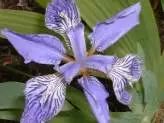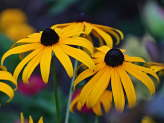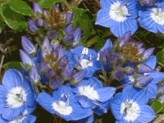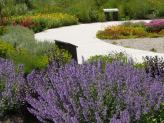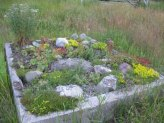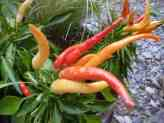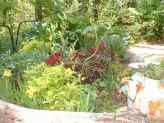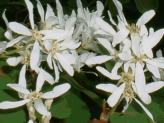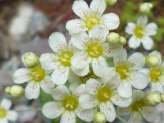If you thought summer color was great…
You’ll love the fall in a garden that contains drought tolerant grasses, perennials and succulents. After a summer-long drought, the colors as the nights get cooler and we get that first frost are brilliant and jaw dropping.
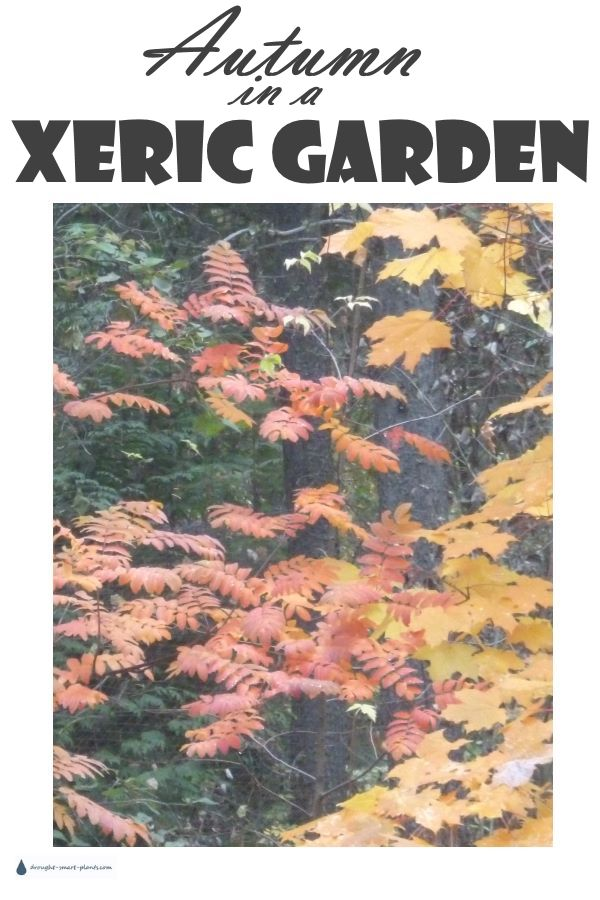
Some years are better than others for fall colors, as those who live in areas where there are a lot of deciduous trees well know.
There are several factors at work, some of which are mysteries even now.
There is a relationship between the amount and frequency of water that plants get through the summer months, the temperature and day length that triggers the turning of the leaves.
The hotter the summer, the better the fall colors, it seems.
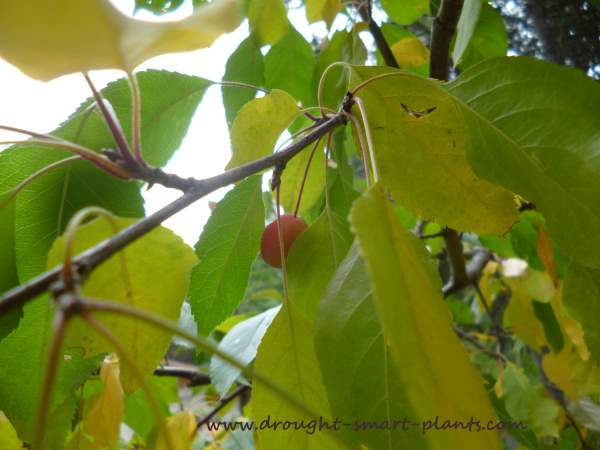
Apple trees of all kinds, even the ornamental crabs, tend to go golden rather than red tones. The tiny fruits of this Almey crab are perfect miniature apples.
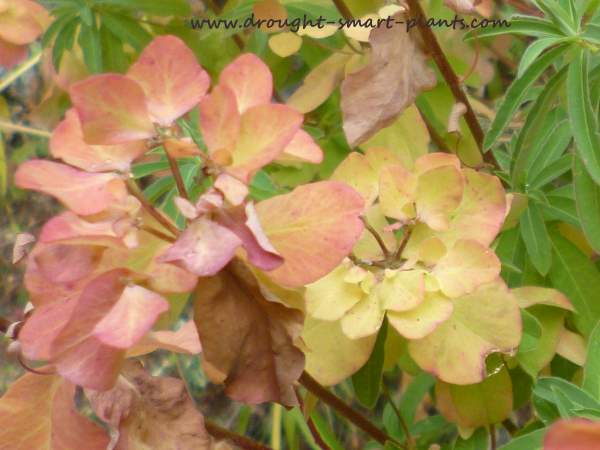
The bracts of Euphorbia polychroma are an intense chartreuse in the summer, ripening to a lovely peach color as the leaves start to turn. These are not actually flowers, which are tiny and insignificant, but they serve the same purpose.
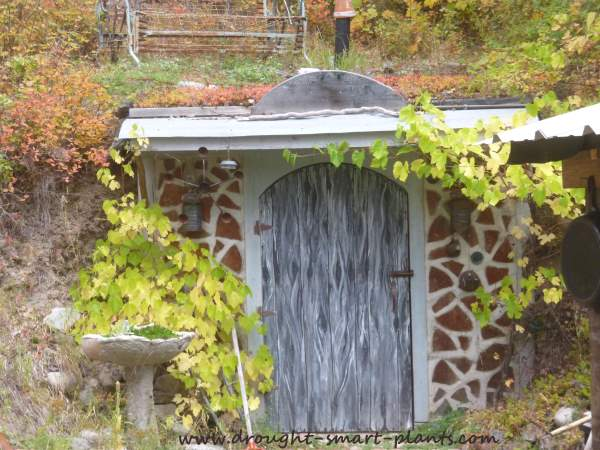
Grapevines turn golden arching over the door, and the brilliant orange of Sedum kamschaticum liven up the fall decor of the root cellar, Glory Be.
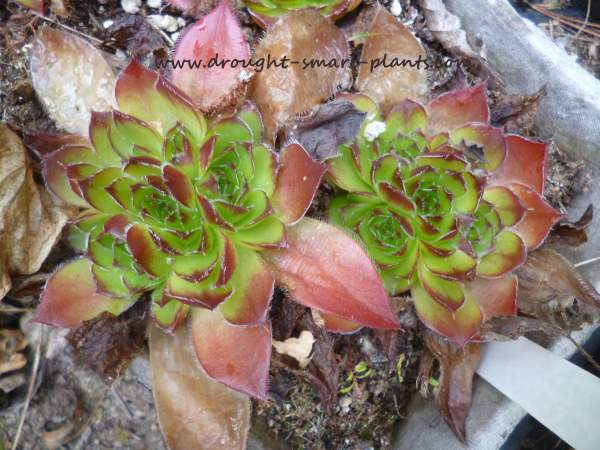
Jovibarba heuffelii don’t just change color as the nights get cooler, they also begin their splitting at the crown. Next year, these can be surgically separated to form new plants.
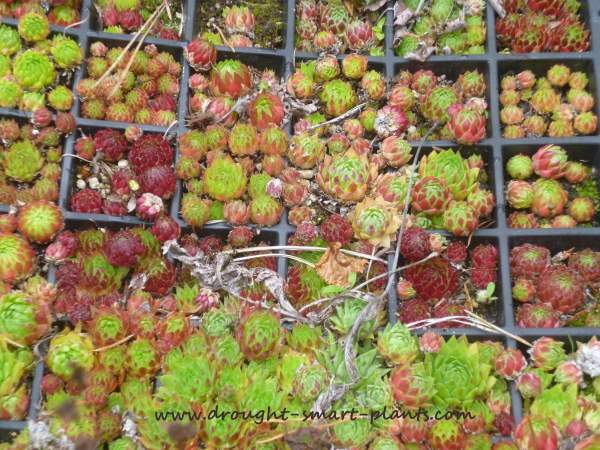
Still in their cell packs, these stressed out Jovibarba species show even more coloration than usual. Kept root bound and dry, they show deep ruby red, taupe, burgundy an lime greens tipped with gold.
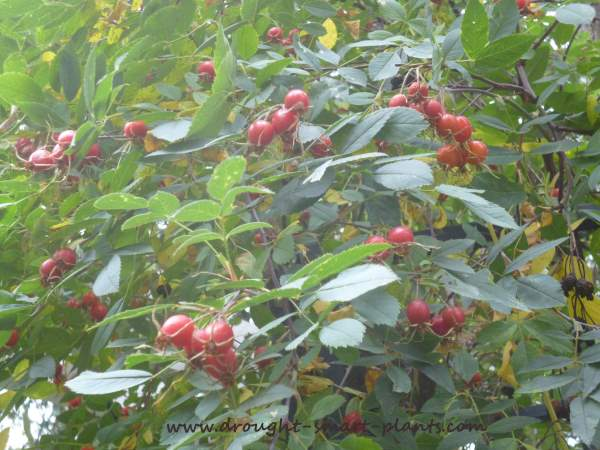
An abundance of blooms on Rosa glauca, sometimes known as R. rubrifolia, lead to a bumper crop of rose hips.
These stay on the plant until the end of September some years, making a nice late season show, and a feast for grouse that fly up into the shrub to eat them.

One of the last stonecrop to flower, Sedum cauticolum makes up for it with an incredible show.
The plant is almost covered in trusses of blooms, all opening in sequence over the span of several weeks.
This gives the pollinators one last chance to stock up before winter.
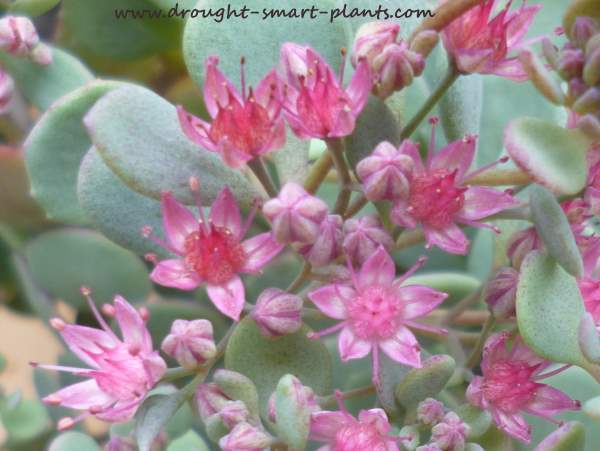
Although we see these groups of flowers as a clump, the pollinators see them as separate blooms. You can see why they’re attracted to such delightful flowers.
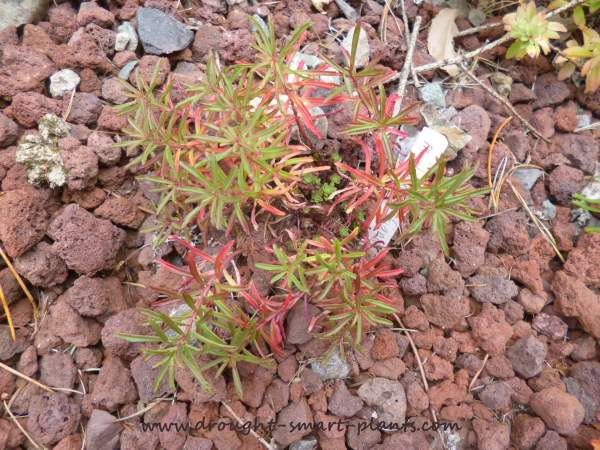
The slender stems and leaves of Sedum middendorffianum turn a delicious cherry color after a frost. This shy blooming species gives us a colorful show regardless…
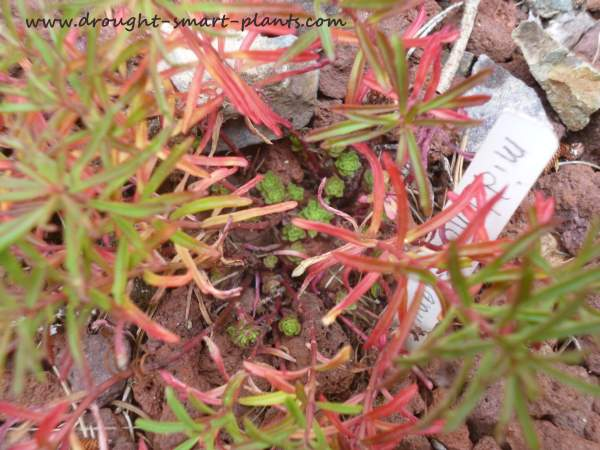
Even while it’s preparing for a new season. The next years buds are snuggled at the base of the stems, where they’ll be protected against snow, rain and bad weather.
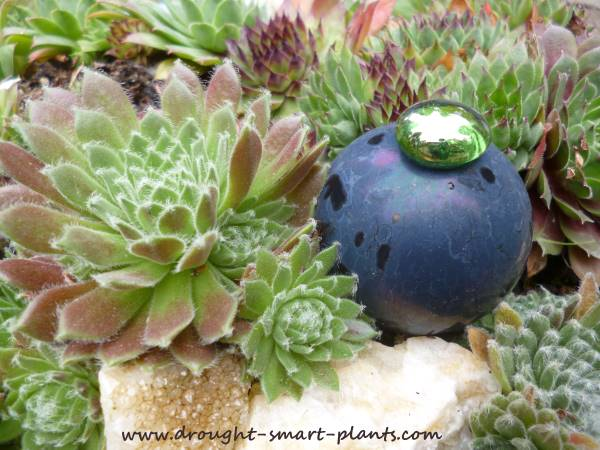
Sempervivum, more than any other hardy succulent, have the ability to change color sometimes in extreme ways.
Seeing them crowded together in a craft or mosaic gives you an idea of how they vary in their different forms and textures, not to mention their ever-changing hues.
What kind of beauty do you see in your garden as the year draws to a close? Gorgeous flowers are nice, but there are a lot of other beautiful features in an Autumn garden.

